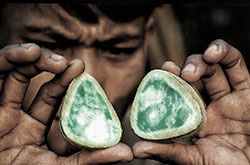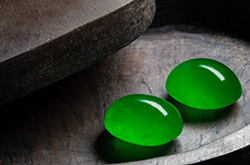fei cui identification
-
Burmese Jade | The Inscrutable Gem

Myanmar's jadeite mines occupy a privileged place, representing the planet's principal source of fine jadeite jade. This article covers the deposits themselves, along with the cutting, grading and trading of jadeite.
-
From Fei Cui to Jadeite and Back | Questions and Answers

Recent studies show that the gem known throughout the non-Chinese world as "jadeite" jade is actually a rock composed of three major mineral components – jadeite, omphacite and kosmochlor. These components grow in a submicroscopic aggregate with grains so small that normal lab instruments cannot easily determine the true composition. As a result, China's gem trade has adopted the traditional term "fei cui" (pronounced 'fay choy') to cover all the pyroxene jades. Lotus Gemology has done the same starting on 1 July 2023, dropping the names jadeite/omphacite/kosmochlor in favor of the scientifically more correct "fei cui."
